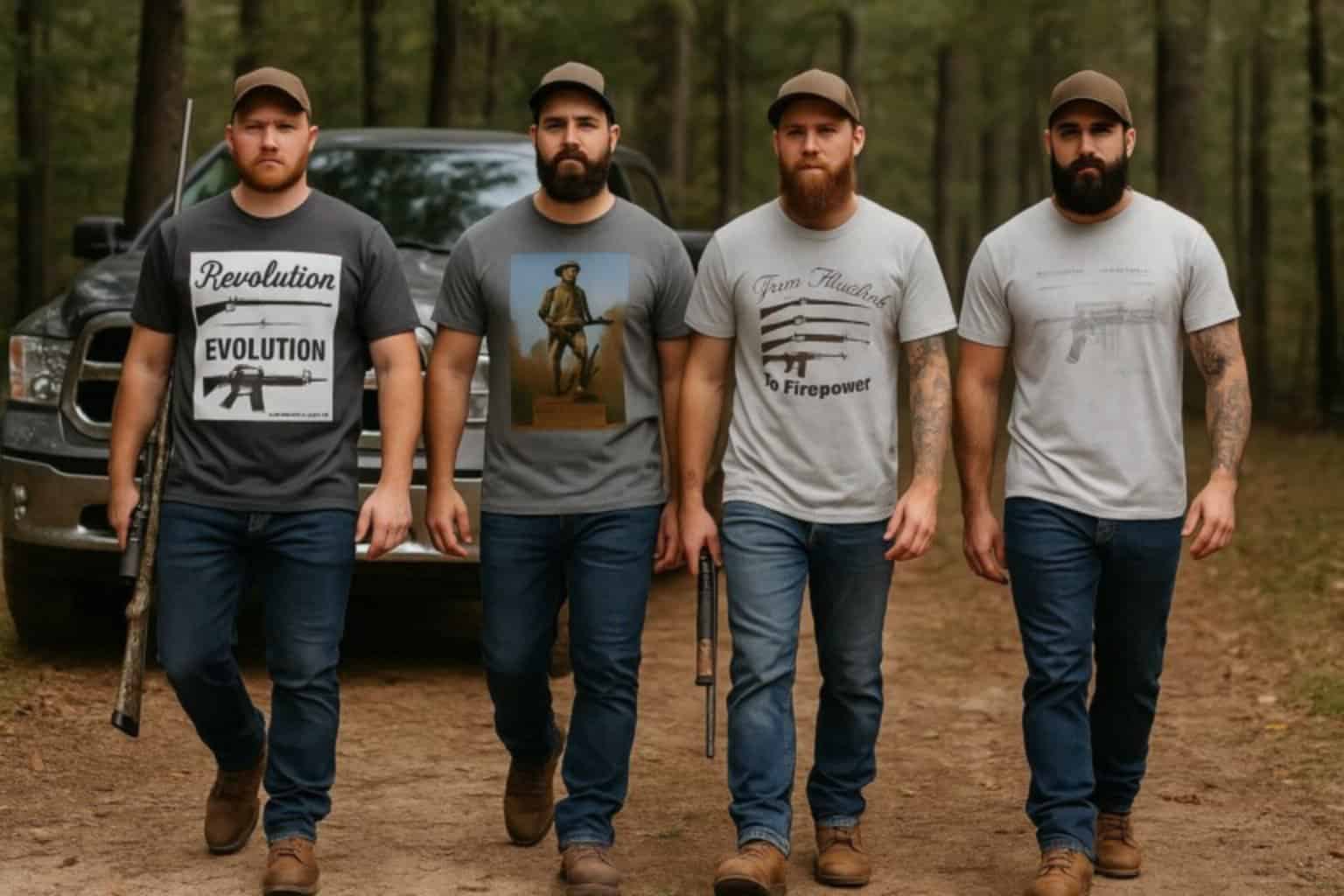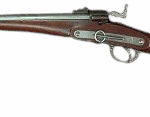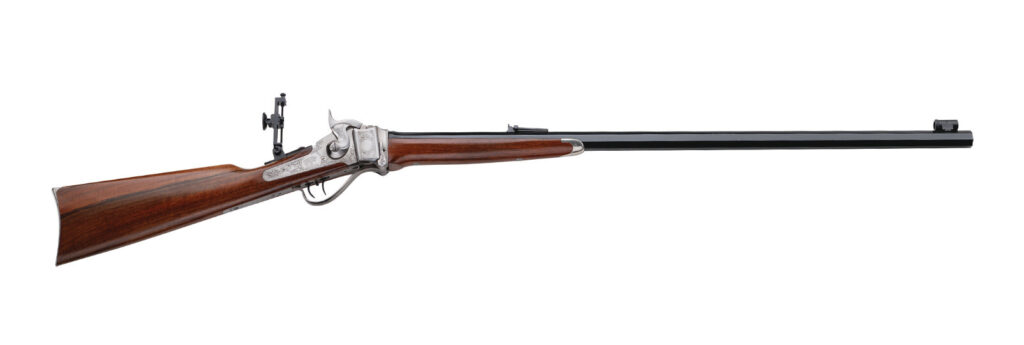
The Starr Carbine: A Revolutionary Cavalry Weapon of the American Civil War
The Starr Carbine remains one of the most significant firearms of the American Civil War, representing a transitional period in firearm technology where breechloading systems began replacing traditional muzzleloaders. Issued primarily to Union cavalry regiments, the Starr Carbine provided a faster rate of fire, greater battlefield versatility, and improved reliability over its predecessors. Though often overshadowed by more famous carbines such as the Sharps and Spencer, the Starr was an important tool in the evolving tactics of mid-19th-century warfare.
Origins: The Evolution Toward Breechloaders
To fully appreciate the development of the Starr Carbine, it is essential to understand the firearms that influenced its creation. Prior to the widespread adoption of breechloading carbines, most military forces relied on muzzleloading rifles and muskets, which were slower to reload and often unreliable in the chaos of battle.
Among the first major attempts at a breechloading military rifle was the Hall Model 1819, developed by John Hall. This was the first firearm in U.S. military history to feature a fully integrated breechloading system, allowing soldiers to reload without having to ram a projectile down the barrel. However, the Hall suffered from gas leakage issues, reducing its efficiency.
A more successful step toward breechloading weapons came with the Sharps Carbine, first introduced in 1848 and continually improved through the Civil War. The Burnside Carbine, patented by Ambrose Burnside in 1857, also played a crucial role in pushing breechloading technology forward. The Starr Carbine emerged as part of this lineage, developed by Eben T. Starr, an ambitious firearms designer who sought to create a reliable and cost-effective alternative to the more expensive Sharps and Burnside models.
Development and Manufacturing: The Starr Arms Company
The Starr Arms Company, founded by Eben T. Starr in 1856 in Yonkers, New York, initially focused on producing revolvers for the U.S. military. The company’s .36-caliber and .44-caliber revolvers gained favor among Union soldiers, but the outbreak of the Civil War necessitated an expansion into carbine production to meet the growing demand for cavalry weaponry.
By 1863, the company had secured a U.S. government contract for approximately 20,000 Starr Carbines, chambered in .54 caliber and using a percussion cap ignition system. Unlike muzzleloading muskets, which required multiple steps to reload, the Starr utilized a tilting breechblock action, allowing cavalry troops to reload significantly faster while on horseback.
The Starr Carbine's barrel length was approximately 21 inches, making it shorter and more maneuverable than standard infantry rifles such as the Springfield Model 1861 or the Pattern 1853 Enfield. The firearm’s weight of 7.4 pounds provided a balanced mix of portability and durability, making it well-suited for fast-moving cavalry engagements.
Technical Specifications and Performance
- Caliber: .54
- Overall Length: 37.5 inches
- Barrel Length: 21 inches
- Weight: 7.4 pounds
- Action: Breechloading, tilting breechblock
- Ignition: Percussion cap
- Effective Range: 200-300 yards
- Rate of Fire: Approximately 8-10 rounds per minute, significantly faster than muzzleloaders
The Starr Carbine’s design prioritized ease of maintenance and rapid reload capability, crucial advantages on the battlefield. Soldiers simply inserted a paper cartridge into the breech and placed a percussion cap on the nipple to fire the weapon. This system, while not as advanced as the metallic cartridge repeaters that would come later, was still a major improvement over traditional muzzleloaders.
Use in Combat: The Starr Carbine on the Battlefield
The Starr Carbine was widely issued to Union cavalry units, playing a role in numerous engagements throughout 1863-1865. Unlike infantry units that relied on rifled muskets, cavalry troops required lightweight, fast-reloading carbines that could be fired from horseback or during dismounted skirmishes.
Though less famous than the Spencer Repeating Carbine, which used metallic cartridges, or the Sharps Carbine, which had already gained a strong reputation, the Starr was a practical and reliable weapon. It was particularly useful in engagements where rapid movement and rate of fire mattered more than long-range accuracy.
Several cavalry regiments, including those in the Army of the Potomac, utilized the Starr Carbine during campaigns in Virginia, Tennessee, and Georgia. Reports from the field indicate that while many troops appreciated its reliability, there was a preference for the Sharps among those who had used both.
Competitors and the Decline of the Starr Carbine
Despite its success during the Civil War, the Starr Carbine faced stiff competition from other carbines, particularly:
- Sharps Carbine – More popular due to its superior gas seal and well-known reliability.
- Burnside Carbine – Used a unique brass cartridge, providing a more gas-tight seal than paper cartridges.
- Spencer Carbine – A game-changer with its seven-round magazine, allowing for sustained fire far superior to single-shot designs like the Starr.
While the Starr Carbine held its own, it did not introduce a groundbreaking technological advancement, and by the end of the war, metallic cartridge breechloaders were rapidly rendering percussion-based systems obsolete.
Post-War Surplus and Starr’s Decline
After the Civil War, thousands of Starr Carbines were declared surplus and sold at discounted rates to civilians and foreign buyers. However, with the U.S. military moving toward metallic cartridge firearms such as the Springfield Trapdoor series, the Starr Carbine quickly became obsolete.
The Starr Arms Company attempted to adapt by offering carbine conversions to metallic cartridges, but these efforts failed to secure significant contracts. By 1867, Starr Arms ceased production, unable to compete with companies like Winchester, Remington, and Colt, which had embraced the next generation of firearm technology.
Legacy and Collectibility
Though overshadowed by more famous carbines, the Starr Carbine remains a fascinating piece of Civil War history. Its manufacturing quality, use in combat, and role in transitioning to faster-loading firearms make it a valued collector's item today. Original Starr Carbines in good condition are sought after by Civil War firearm collectors, with some specimens fetching several thousand dollars at auction.
Conclusion: The Starr Carbine’s Place in History
The Starr Carbine is a testament to the rapid firearm innovations of the Civil War era. While it did not revolutionize cavalry weaponry like the Spencer, it still played an essential role in modernizing the battlefield. With its breechloading action, improved reload speed, and reliable design, the Starr was a formidable weapon in the hands of Union cavalry.
Despite its eventual decline, the Starr Carbine remains a critical piece of American firearms history, representing an era of bold technological strides, rapid industrialization, and the constant evolution of military tactics. Today, it stands as a reminder of a pivotal moment in history—when the world of warfare shifted permanently toward faster, more efficient, and more effective firearms.
Collectors, historians, and firearms enthusiasts alike continue to recognize the Starr Carbine's place in the grand narrative of Civil War weaponry, ensuring that its legacy endures for generations to come.
Discussion groups covering percussion weapons can be found here.
If you know of any forums or sites that should be referenced on this listing, please let us know here.








